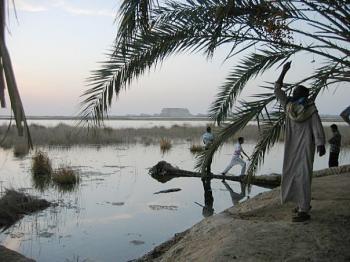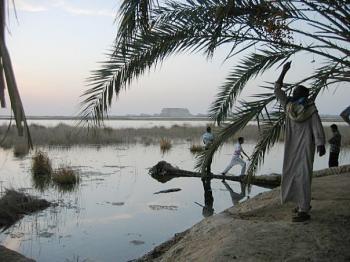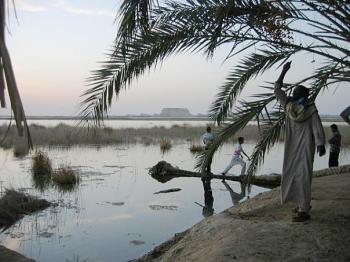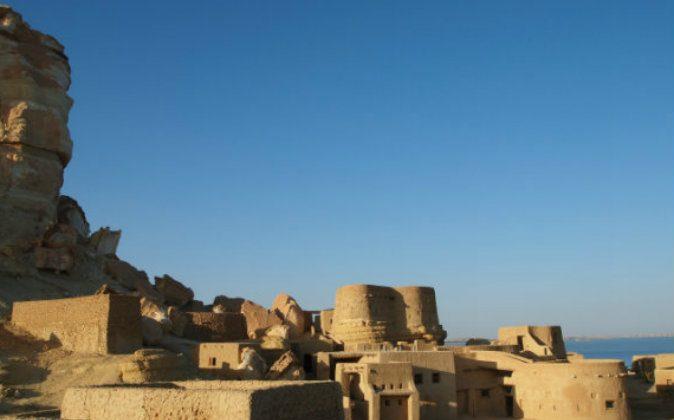Once Egypt’s most inaccessible oasis, Siwa lies in the midst of the Western Desert, 31 miles from Libya’s border, surrounded by sand dunes of the Great Sand Sea, and the Middle Miocene limestone plateau.
Siwa remains a remote place of beauty and mystery. Magical stories of djinns in the One Thousand and One Arabian Nights are easily imagined under the night sky of this desert paradise.
The town and surrounding villages within the oasis are home to over 20,000 residents who are mostly Berber and speak the local language Tasiwit, also referred to as Siwi. The local population is divided into nine tribes, each administered by its own chief. Crimes committed by Siwans are handled on the local level within the tribes which, according to Siwa’s residents, prevents the Egyptian government from stepping in. As an example of a punishment prescribed by one chief, a man was ordered to fast for an additional month after the traditional fasting during the month of Ramadan, which is observed throughout Egypt.
Siwa is also home to storytellers, called hakawati in Arabic, who create and orally pass down mystical stories of adventure, djinns, and magic. These stories are not only for entertaining, but are also intended to pass down moral rules and lessons. In the tradition of Shahrazad, the telling of a single interwoven story can go on for days or even weeks.
Because of Siwa’s remaining ancient tribal traditions, it is common for a girl to be married as early as the age of 14. After marriage, Siwa’s local women are almost never seen outside the home without a full veil made of black chiffon, which is used to cover the entire head and face. Though tourists and the few foreigners residing in Siwa wear their usual western attire, the community remains a conservative one.
Siwa’s special mysterious qualities seem to be omnipresent yet difficult to discern. Perhaps it is simply because Siwa is an island of greenery, sweet fresh air, pure water, and life in the midst of hundreds of miles of arid, scorching desert. Regardless, it is not surprising that this beautiful remote oasis was home to one of the most powerful oracles of the ancient world.
Based on archeological evidence, the Temple of Amun is thought to have been established in the 7th century B.C. and saw many kings and great men who would undertake the perilous journey across the desert to receive prophesies from its oracle.
The oracle of Siwa became so powerful and acclaimed that, in 525 B.C., King Cambyses, the first Persian ruler of Egypt, sent an army of 50,000 to capture the territory and overthrow her, for she had predicted his death. As a consequence of his attempted invasion, the entire army disappeared in the middle of the Western Desert without a trace. Evidence of the army’s fate has not been found to this day though writings left by Greek historian Herodotus indicate it may have been a sandstorm that engulfed all of the men and apparently every last piece of armor and equipment they carried.
One has little reason to wonder why, in 331 B.C., the fame-seeking Alexander the Great traveled to consult Siwa’s oracle. He went to confirm what he had already decided for himself—that he was a direct descendant and the son of the god Amun, also known as Zeus or Jupiter by the Greeks. Of all visitors to Siwa, he was the most famous and if not for him the oasis may have been lost to history. Alexander left Siwa triumphant. Whatever it was that the oracle whispered to him led him to believe he was correct, thus spurring his conquests in Asia.









Friends Read Free